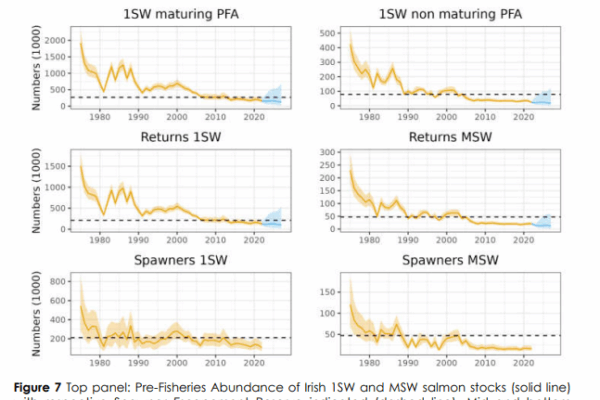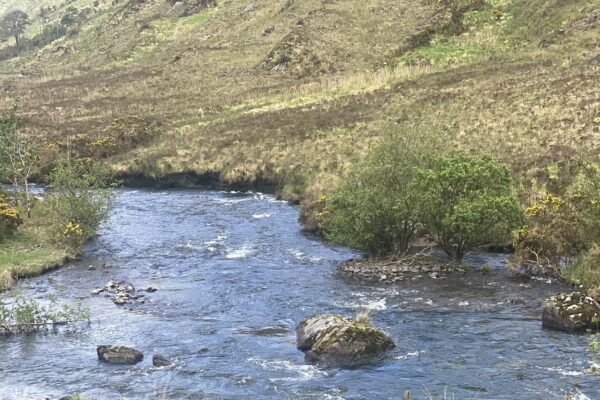Salmon Watch Ireland Strongly Welcomes 2026 Salmon Protection Measures and Calls for a Fair Transition Away from All Commercial Exploitation
22 November 2025
Atlantic salmon stocks in Ireland have reached critically low levels, and decisive intervention is now essential to ensure that as many fish as possible survive to reach their spawning grounds in the years ahead. The species is caught in a rapidly accelerating decline, with many rivers falling far short of the numbers needed to sustain healthy future populations. Without urgent and meaningful conservation measures, we risk pushing Atlantic salmon toward irreversible collapse.
Accordingly, Salmon Watch Ireland welcomes the publication of the 2026 Wild Salmon and Sea Trout Tagging Scheme Regulations and associated Information Note, commending the Department of Climate, Energy and the Environment, Inland Fisheries Ireland and the Technical Expert Group on Salmon (TEGOS) for taking decisive, science-driven action to protect Ireland’s diminishing wild salmon stocks.
Salmon Watch Ireland describes the new framework as one of the most encouraging conservation steps in over a decade, signalling a genuine commitment to reversing long-term decline.
A Clear, Science-Led Approach to Salmon Conservation
The 2026 regulations introduce some of the strongest salmon conservation measures in recent years, including:
- Mandatory Catch & Release from 1 January to 31 May, protecting vulnerable spring salmon
- Harvest only from 1 June to 31 August on rivers with a proven surplus.
- A seasonal bag limit of three salmon for recreational anglers on rivers with a harvestable surplus.
- Improved conservation limits (CL) thresholds, aligned with best conservation international practice
- Expanded protection for multi-sea-winter (MSW) salmon. However, the organisation encourages the Department to keep the situation under review and consider whether a future maximum size limit could help protect the largest, most important spawning fish.
- Closure to exploitation in September.
- Closure of significant number of commercial salmon fisheries
“These are robust and welcome reforms,” said John Murphy, Salmon Watch Ireland spokesperson.
“The Department has shown leadership, transparency, and a real understanding of the pressures facing this iconic species.”
Commercial Fisheries: Time for a Fair, Supportive Transition
Salmon Watch Ireland notes that a small number of draft-net commercial fisheries, including the Laune Estuary and Cork Harbour, remain technically capable of operating in 2026 based on available stocks. We have sought clarification on the status of one further fishery.
This organisation fully respects the heritage and rights of these fishers.
However, given sustained declines in national and international salmon returns, Salmon Watch Ireland believes the next constructive step is:
- A closure of all remaining commercial fisheries
- Supported by a fair, well-funded compensation and transition scheme
This would provide certainty for fishers while aligning Ireland with modern international conservation standards.
“Commercial fishers have operated legally. They deserve respect — and proper compensation — as Ireland moves toward a fully conservation-based salmon policy.”
A Shared Mission to Restore Wild Salmon
Salmon Watch Ireland applauds the direction of travel in the 2026 regulations and urges continued national action on:
- Water quality improvements
- Habitat restoration and barrier removal
- Enhanced enforcement resourcing
- Addressing climate and marine survival pressures
- Tackling aquaculture-related impacts
“This is the most hopeful moment for salmon conservation in many years,” the spokesperson concluded.
“With continued collaboration among stakeholders — and a fair, well-designed transition away from commercial exploitation — Ireland can restore its wild salmon for future generations.”




